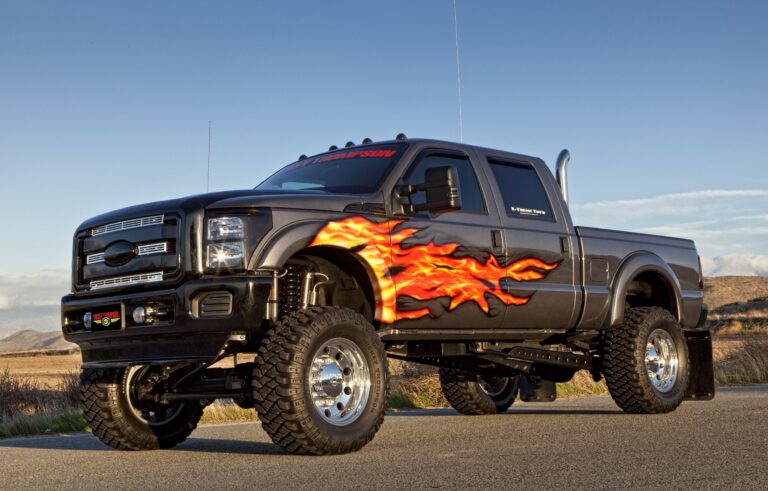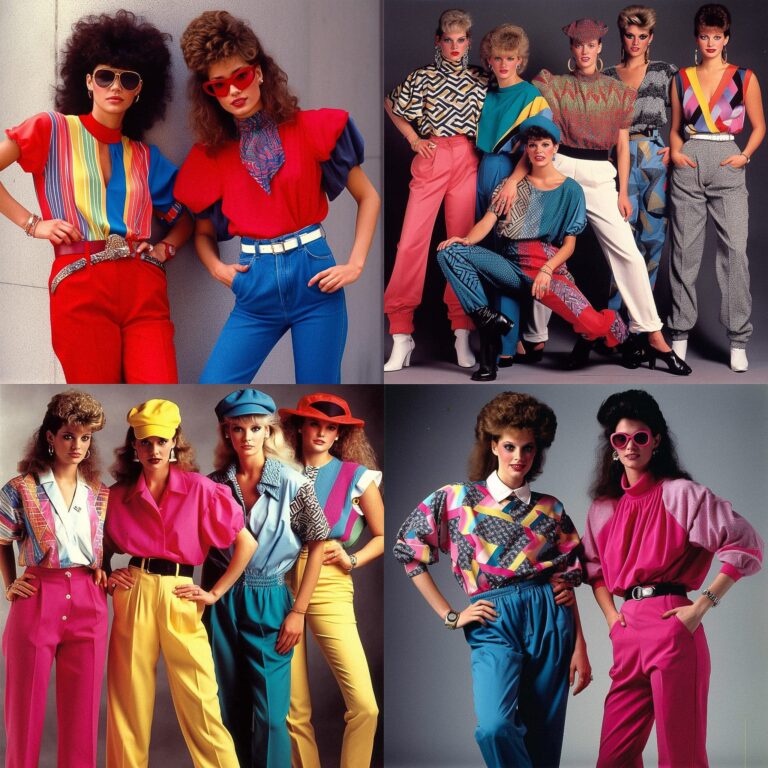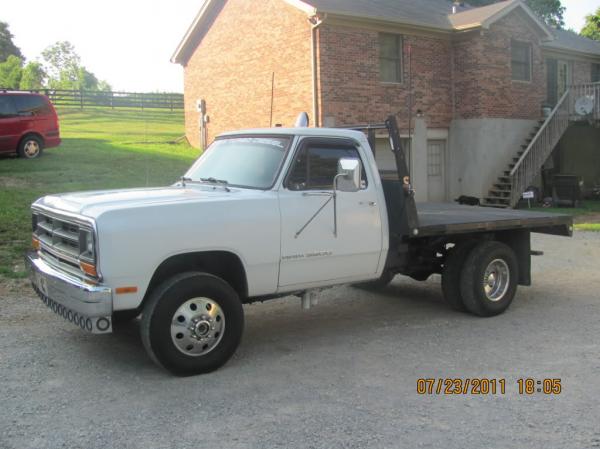Bagged Trucks For Sale: Your Ultimate Guide to the Low Life
Bagged Trucks For Sale: Your Ultimate Guide to the Low Life cars.truckstrend.com
Introduction: Rolling in Style – The Allure of Bagged Trucks
In the vast landscape of automotive customization, few modifications command as much attention and admiration as air suspension, commonly known as "bagging." A bagged truck isn’t just a vehicle; it’s a statement, a canvas of engineering and artistry that allows drivers to adjust their ride height at the touch of a button. Gone are the days of fixed, harsh lowered suspensions; bagged trucks offer the ultimate in adjustability, allowing owners to lay their frames on the ground for stunning show-stopping aesthetics, then air up for a smooth, comfortable ride over speed bumps and varied terrain.
Bagged Trucks For Sale: Your Ultimate Guide to the Low Life
For enthusiasts and practical users alike, the appeal of bagged trucks is multi-faceted. It’s about achieving that perfect, aggressive stance, enhancing ride quality, and even improving towing capabilities by leveling the load. If you’re considering entering this dynamic world, whether by purchasing a pre-built custom or planning a project, understanding the nuances of "Bagged Trucks For Sale" is crucial. This comprehensive guide will delve into every aspect, from what they are and why they’re popular, to essential considerations, where to find them, and what to look for before making a purchase.
What Exactly Are Bagged Trucks? A Deep Dive into Air Suspension
At its core, a bagged truck replaces traditional coil springs or leaf springs with air springs, often referred to as "air bags" or "air bellows." These durable, rubber-reinforced air chambers inflate or deflate with compressed air, allowing the vehicle’s height to be dynamically adjusted. This system offers a significant advantage over static suspensions: instant, on-demand ride height control.
The complete air suspension system typically comprises several key components:
- Air Springs (Bags): The heart of the system, these replace conventional springs and support the vehicle’s weight. They come in various styles (e.g., sleeve, double-bellow, convoluted) depending on application and desired travel.
- Air Compressor(s): Electrically powered pumps that compress ambient air and fill the air tank. Multiple compressors can be used for faster inflation.
- Air Tank: Stores compressed air, ensuring immediate air availability for raising the vehicle. Tanks vary in size (gallons) and material (steel, aluminum).
- Valves: Electrically actuated solenoids that control the flow of air from the tank to the individual air bags, allowing precise control over each corner of the vehicle.
- Control System: This can range from simple manual switches to sophisticated electronic management systems (EMS) with digital displays, pressure sensors, ride height sensors, and programmable presets for various heights (e.g., "drive height," "show height," "max lift").
- Air Lines: Hoses (typically nylon or DOT-approved air brake line) that connect the tank, valves, and air bags, carrying the compressed air.
- Shocks: While air bags support the weight, conventional or specialized shocks are still essential to dampen suspension movement and control rebound, ensuring a smooth ride.


When you want to lower the truck, the control system opens the valves, releasing air from the bags. To raise it, the compressor fills the tank, and the valves open to send air into the bags. This seamless adjustability is what defines the "bagged" experience.
Why Buy a Bagged Truck? The Benefits Unpacked
The appeal of bagged trucks extends far beyond mere aesthetics, offering a blend of practical advantages and undeniable "cool factor."
- Unrivaled Aesthetics and Stance: This is perhaps the primary draw. A bagged truck can be aired out to sit incredibly low, often with the frame or rocker panels resting on the ground, creating an aggressive, show-stopping look. At car shows or cruising, this capability turns heads like no other.
- Superior Ride Quality: When properly tuned and set up with appropriate shocks, air suspension can offer a significantly smoother, more comfortable ride than traditional coil springs, especially over bumps and uneven surfaces. The air springs absorb road imperfections more effectively.
- Dynamic Ride Height Adjustment: This is the core benefit.
- Clearing Obstacles: Easily raise the truck to clear speed bumps, steep driveways, or rough terrain.
- Towing and Hauling: Air up the rear (or all four corners) to compensate for heavy loads, maintaining a level stance and preventing "squat," which improves safety and handling.
- Parking: Lower the vehicle to fit into garages with limited clearance.
- Showmanship: "Air out" for a dramatic display at events.
- Enhanced Performance (with proper setup): While primarily known for comfort and stance, a well-engineered air suspension system can improve handling by reducing body roll and maintaining optimal tire contact with the road, especially when cornering.
- Versatility: A bagged truck can transform from a low-slung cruiser to a practical hauler or even a moderately capable off-roader (depending on the specific setup and truck type) within seconds.
- Reduced Wear and Tear: By being able to raise the vehicle over obstacles, you can protect undercarriage components that might otherwise scrape or hit.

Types of Bagged Setups: Understanding the Options
Not all bagged trucks are created equal. The complexity and capability of an air ride system vary widely, impacting cost, performance, and maintenance.
- 2-Corner Systems (Front or Rear): The most basic setup, where only the front or rear axle is on air bags. Common for those wanting a low front stance or just load leveling in the rear. Less versatile but more affordable.
- 4-Corner Systems (Full Air Ride): The most common and desirable setup, allowing independent or simultaneous control of all four wheels. This provides maximum adjustability for stance, ride quality, and load leveling.
- Basic Manual Control: Utilizes simple toggle switches and pressure gauges to control air flow to each bag. Affordable but less precise and requires constant monitoring.
- Analog Electronic Management: Uses electric switches and often a central manifold with pressure sensors for more convenient control, often with dual-needle gauges to monitor pressure.
- Digital Electronic Management Systems (EMS): The most advanced systems, featuring sophisticated ECUs, digital displays, height sensors at each corner, and programmable presets. These systems can automatically level the vehicle, recall specific ride heights, and even offer self-leveling capabilities while driving. Examples include AccuAir, Air Lift Performance, and RideTech.
- "Frame-Laying" vs. "Driveable Height" Systems:
- Frame-Laying: Designed to drop the frame completely to the ground when aired out, often requiring extensive frame modifications (e.g., C-notches, Z-cuts, custom crossmembers). Primarily for show.
- Driveable Height: While still offering significant lowering, these systems prioritize maintaining some ground clearance even at their lowest point, making them more practical for daily driving without extreme frame mods.
Key Considerations When Buying Bagged Trucks For Sale
Purchasing a bagged truck, especially a pre-owned one, requires careful consideration. You’re not just buying a truck; you’re buying a custom suspension system.
- Budget: Bagged trucks can range from affordable daily drivers with basic systems to six-figure show vehicles. Define your budget, not just for the purchase, but also for potential maintenance and upgrades.
- Quality of the Air Ride System:
- Components: Research reputable brands for air bags (e.g., Air Lift, Slam Specialties), compressors (e.g., VIAIR, AccuAir), and management systems (e.g., AccuAir, Air Lift Performance, RideTech). Cheaper components often lead to more issues.
- Installation: This is paramount. A poorly installed system is a nightmare of leaks, electrical issues, and potential safety hazards. Look for clean wiring, properly routed air lines, secure mounting of components, and professional-looking welds if frame modifications were done.
- Maintenance History: Ask for records of air ride system installation, maintenance, and any repairs. Air systems require periodic checks for leaks, compressor function, and bag integrity.
- Intended Use: Will it be a daily driver, a show truck, or a workhorse? A frame-laying show truck might not be practical for daily commuting or heavy hauling without significant compromise.
- Frame Modifications: Many bagged trucks, especially those that lay frame, have undergone significant frame modifications (e.g., C-notches, Z-cuts, custom crossmembers). Inspect welds thoroughly for quality and integrity. Poor welds are a major safety concern.
- Rust: Pay close attention to rust, particularly on the frame, suspension mounting points, and around any modified areas. Rust can compromise structural integrity.
- Electrical System: Air ride systems draw significant power. Ensure the truck’s electrical system is robust enough, with proper fusing and wiring for the compressor(s) and control unit.
- Legality and Inspections: Laws regarding vehicle modifications vary by state/country. Check local regulations regarding ride height, frame modifications, and vehicle inspections to ensure the truck will be street legal where you live.
- Drivetrain and Steering Geometry: Lowering a truck significantly can affect driveline angles and steering geometry. Ensure these aspects have been properly addressed (e.g., custom driveshafts, dropped spindles, extended control arms) to prevent premature wear and maintain safe handling.
Where to Find Bagged Trucks For Sale
The market for bagged trucks is diverse, with various avenues for finding your next custom ride.
- Online Marketplaces:
- Facebook Marketplace: A popular choice for local listings, often with active custom truck communities.
- Craigslist: Similar to Facebook Marketplace, good for local finds.
- Specialized Forums & Groups: Websites and social media groups dedicated to custom trucks, air ride, or specific truck brands often have "for sale" sections. Examples include forums for C10s, OBS Fords, or general custom truck communities.
- eBay Motors: Can find a range of custom vehicles, though often higher-end.
- Bring a Trailer / Cars & Bids: Occasionally feature highly customized vehicles, including bagged trucks, usually at the higher end of the market.
- Custom Truck Dealerships/Shops: Some specialized dealerships or custom fabrication shops may have bagged trucks for sale that they’ve built or taken on trade. These often come with a higher price tag but potentially better quality and documentation.
- Auto Shows and Events: Attending custom truck shows, swap meets, or enthusiast gatherings is an excellent way to see trucks in person, talk to owners, and sometimes find trucks directly for sale.
- Word of Mouth: Networking within the custom truck community can often lead to finding private sellers.
Tips for Inspecting a Bagged Truck Before Purchase
Never buy a custom vehicle sight unseen, or without a thorough inspection.
- Visual Inspection (Aired Up & Down):
- Aired Up: Check for levelness, proper clearance, and any visible sag.
- Aired Down: Look for proper "lay," ensuring no components are binding or scraping unintentionally.
- Components: Visually inspect all air bags for cracks, dry rot, or obvious damage. Check air lines for kinks, chafing, or signs of leaks. Inspect the compressor(s) and tank for secure mounting and corrosion.
- Frame & Welds: Critically examine all frame modifications and welds. Look for consistency, proper penetration, and no signs of cracking or shoddy work.
- Test the Air System:
- Cycle Up/Down: Operate the system multiple times through its full range of motion. Listen for unusual noises from the compressor or air leaks.
- Hold Pressure: Air the truck up to a driveable height, then turn off the compressor. Let it sit for at least 15-30 minutes (or longer if possible) to check for significant air leaks. A slight drop over hours is normal; a rapid drop is not.
- Soapy Water Test: If you suspect a leak, spray soapy water on all air line connections, fittings, and around the bags. Bubbles indicate a leak.
- Electrical Check: Test all control system functions. Ensure gauges (if present) are accurate. Check that all lights and accessories related to the air ride system work.
- Test Drive:
- Drive at various heights if the system allows.
- Listen for clunks, squeaks, or rubbing noises from the suspension.
- Pay attention to ride quality over different road surfaces.
- Check steering response and braking.
- Professional Pre-Purchase Inspection: For a significant investment, strongly consider having a reputable custom shop or a mechanic familiar with air suspension systems perform a pre-purchase inspection. They can spot issues you might miss.
- Review Documentation: Ask for receipts for the air ride components and installation, as well as any maintenance records. This provides insight into the quality of parts and work done.
Potential Challenges and Solutions
While exhilarating, owning a bagged truck comes with its unique set of potential challenges.
- Air Leaks: The most common issue.
- Solution: Regular inspection of air lines, fittings, and bags. Use high-quality DOT-approved air line and fittings. Proper installation with clean cuts and tight connections is crucial. Carry a small emergency repair kit.
- Compressor Failure: Can happen due to overuse, poor ventilation, or age.
- Solution: Ensure proper compressor sizing for the tank volume, adequate ventilation, and allow cool-down periods. Invest in a reputable brand. Consider dual compressors for redundancy and faster fill times.
- Bag Punctures/Wear: Bags can wear out or be punctured by road debris.
- Solution: Inspect bags regularly for dry rot or damage. Ensure adequate clearance around bags when aired out and up. Drive cautiously over rough terrain.
- Electrical Issues: Wiring faults, blown fuses, or controller malfunctions.
- Solution: Professional installation with proper gauges of wire, fusing, and relays. Keep wiring tidy and protected.
- Ride Quality Issues: Can be bouncy, harsh, or unstable if not properly tuned.
- Solution: This often comes down to mismatched shocks, incorrect bag pressure, or poor suspension geometry. Consult with an air ride specialist for tuning and component selection.
- Cost of Repairs: Specialized components can be more expensive than traditional suspension parts.
- Solution: Factor potential repair costs into your ownership budget. Learn basic troubleshooting to save on labor.
Practical Advice and Actionable Insights
- Do Your Homework: Before even looking at trucks, understand the different types of air ride systems, their components, and reputable brands.
- Set a Realistic Budget: Not just for the purchase, but for insurance, potential maintenance, and future modifications.
- Prioritize Quality: When it comes to air suspension, quality components and, more importantly, quality installation are paramount for reliability and safety. Don’t compromise.
- Inspect Thoroughly: Never rush the inspection process. If you’re unsure, get professional help.
- Understand Maintenance: Be prepared for the slightly higher maintenance demands compared to a stock truck. Learning basic troubleshooting can save you time and money.
- Join the Community: Connect with other bagged truck owners. They are a wealth of knowledge, tips, and potential leads for finding your truck or getting help with issues.
Table Price: Estimated Price Ranges for Bagged Trucks For Sale
It’s challenging to provide exact prices as the market for custom vehicles fluctuates wildly based on the base truck’s condition, the complexity and quality of the air ride system, and the overall level of customization. However, here’s an illustrative table to give you a general idea.
| Truck Type & Age | Condition & Base Truck Status | Bag Setup Level | Estimated Price Range (USD) | Notes |
|---|---|---|---|---|
| Older (Pre-2000) | Rough/Project, Stock Engine | Basic 2-Corner (Rear) | $5,000 – $15,000 | Good for DIY project, will require significant work. |
| Older (Pre-2000) | Driver Quality, Mild Custom | Full 4-Corner (Manual/Analog) | $15,000 – $35,000 | Solid starting point, possibly older system. |
| Older (Pre-2000) | Show Quality, Frame-Off, Engine Swaps | Full 4-Corner (Digital EMS) | $35,000 – $70,000+ | High-end custom builds, often show winners. |
| Newer (2000-2015) | Good Condition, Mild Mods | Full 4-Corner (Analog/Basic Digital) | $25,000 – $50,000 | Modern truck with a good air setup, practical. |
| Newer (2000-2015) | Excellent Condition, Extensive Mods | Full 4-Corner (Advanced Digital EMS) | $50,000 – $80,000+ | Well-built, reliable daily driver or light show truck. |
| Modern (2015-Present) | Stock Condition, Recently Bagged | Full 4-Corner (Digital EMS) | $40,000 – $75,000+ | High initial truck cost, professional bag install. |
| Modern (2015-Present) | High-End Custom Build | Full 4-Corner (Cutting-Edge Digital) | $75,000 – $150,000+ | Full custom builds, often with performance upgrades. |
Note: These ranges are highly variable. Factors like engine condition, interior customization, paint quality, wheel/tire choice, and brand reputation of the air ride components can significantly influence the final price.
Frequently Asked Questions (FAQ) About Bagged Trucks
Q1: What exactly is a "bagged truck"?
A1: A bagged truck is a vehicle that has had its traditional coil or leaf spring suspension replaced with air springs (also called "air bags" or "bellows"). This allows the driver to adjust the vehicle’s ride height by inflating or deflating the air bags with an onboard air compressor system.
Q2: Are bagged trucks reliable?
A2: When installed correctly with quality components, bagged trucks can be very reliable. However, they have more components than traditional suspension, meaning more potential points of failure (e.g., air leaks, compressor issues). Regular maintenance and thorough inspections are key to reliability.
Q3: How much does it cost to bag a truck?
A3: The cost to bag a truck varies widely. A basic 2-corner DIY kit might start from $1,500-$3,000. A full 4-corner system with a digital management system, professional installation, and necessary modifications (like C-notches) can easily range from $5,000 to $15,000 or more, not including the truck itself.
Q4: Is it hard to maintain a bagged truck?
A4: Maintaining a bagged truck is generally more involved than a traditional suspension. It requires periodic checks for air leaks, compressor function, bag integrity, and electrical connections. While not overly difficult, it does demand a bit more attention and understanding of the system.
Q5: Can you tow with a bagged truck?
A5: Yes, absolutely! In fact, air suspension can be superior for towing. By being able to air up the rear (or all four corners) to compensate for the tongue weight of a trailer, a bagged truck can maintain a level stance, which improves handling, braking, and overall safety compared to a squatting traditional suspension.
Q6: Are bagged trucks legal?
A6: The legality of bagged trucks varies by region. Most states/countries allow air suspension, but there may be regulations regarding minimum ride height, frame modifications, and vehicle inspections. It’s crucial to check your local laws before purchasing or modifying a truck.
Q7: How long do air bags last?
A7: The lifespan of air bags depends on quality, driving conditions, and proper installation. High-quality air bags can last 5-10 years or even longer under normal use. Factors like punctures, dry rot from UV exposure, or improper installation can shorten their lifespan.
Conclusion: The Low Life Awaits
Bagged trucks represent a unique intersection of automotive passion, engineering ingenuity, and personal expression. They offer an unparalleled combination of show-stopping aesthetics, dynamic adjustability, and improved ride comfort that static suspensions simply cannot match. Whether you’re drawn to the aggressive stance, the ability to air out for shows, or the practical benefits of adjustable load leveling, the world of bagged trucks offers something for every enthusiast.
Embarking on the journey of owning a bagged truck requires careful research, a discerning eye, and a commitment to understanding its unique needs. By prioritizing quality components, professional installation, and diligent maintenance, you can ensure your bagged truck provides years of head-turning style, versatile performance, and an incredibly smooth ride. Dive in, do your homework, and prepare to experience the ultimate in customizable truck ownership. The low life never looked so good.






